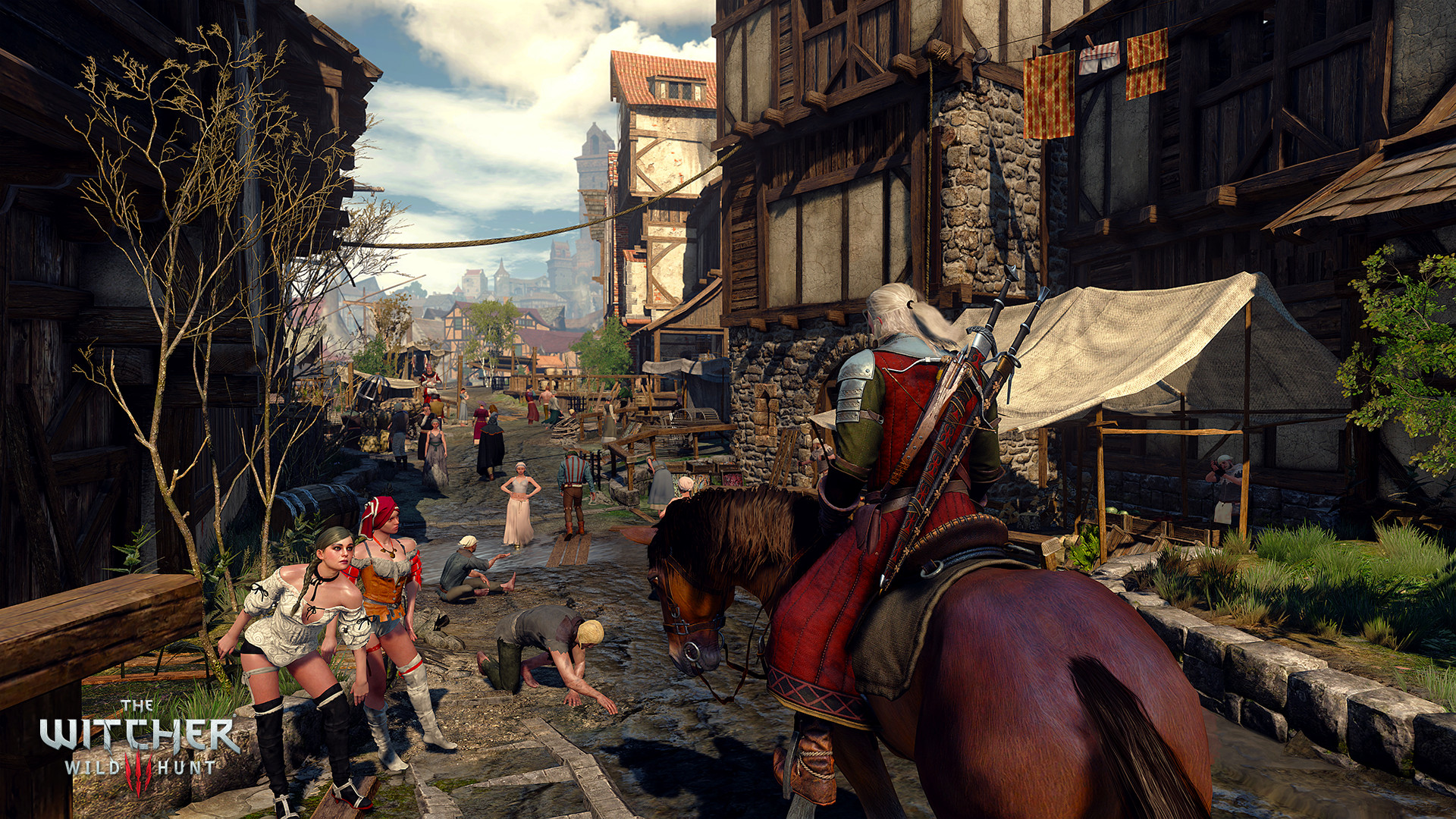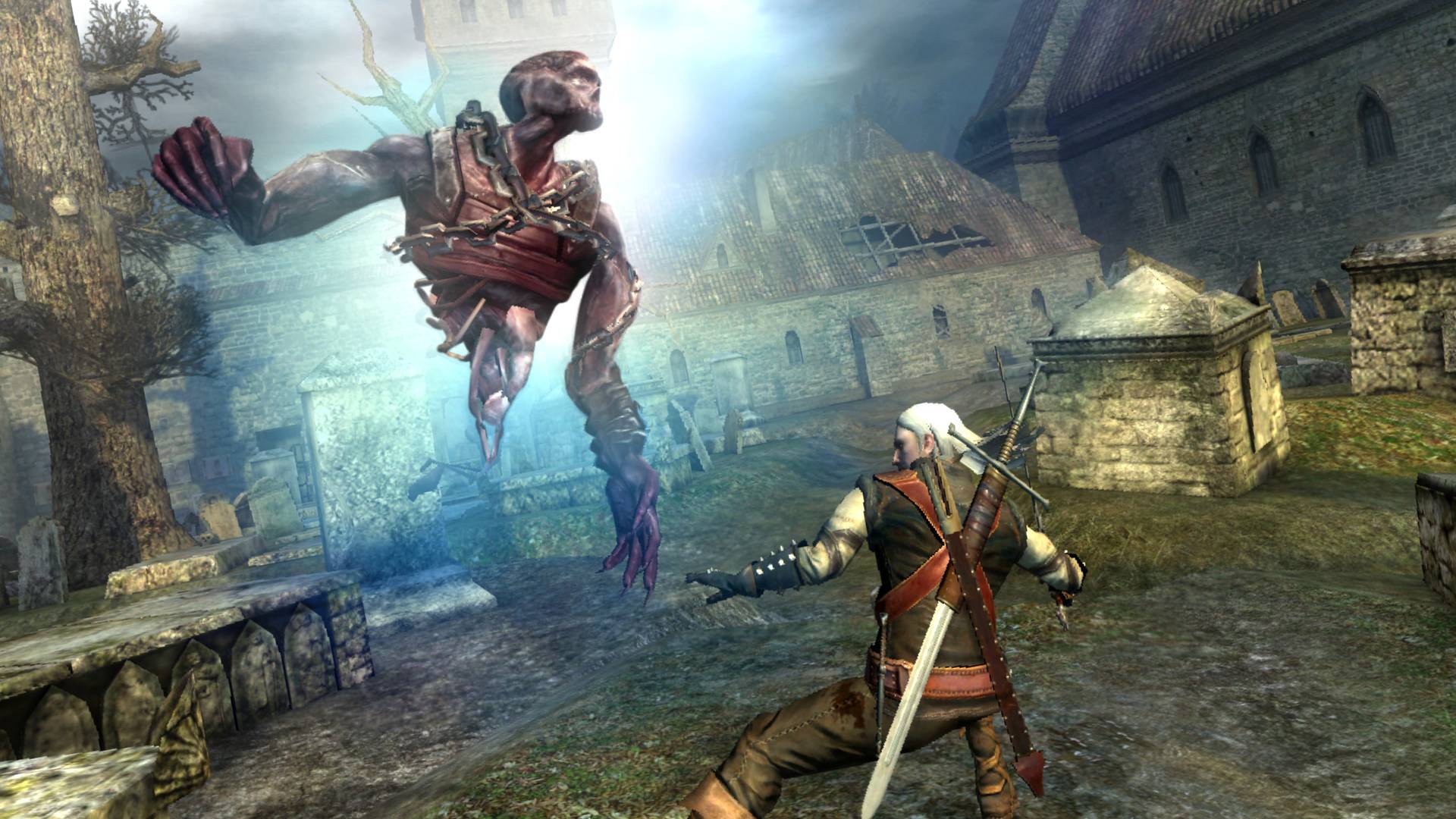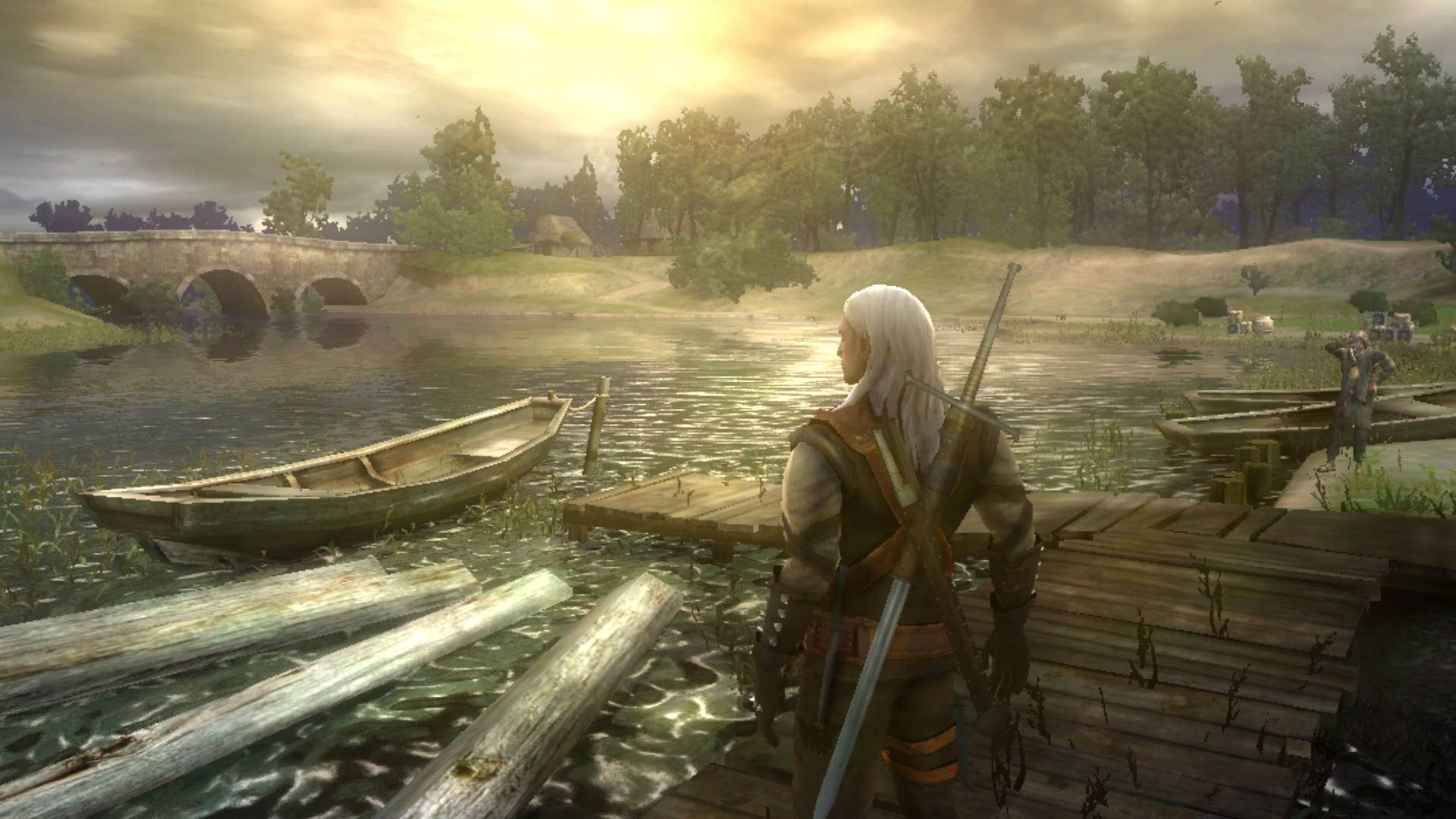The Witcher remake is a chance to finally fix the series' worst part
Geralt of here

Are we absolutely sure the metaverse isn’t just Unreal Engine 5? As if it wasn’t enough that every new game conceivable is being made in Epic’s development suite, even some oldies are returning in ray-traced, ambient occluded finery. 2007’s The Witcher is one of those games.
Fool’s Theory, under supervision from compatriots and original creators CD Projekt, is bringing Geralt’s debut adventure bang up to date in the most advanced game engine out there. It’s all terribly exciting. Especially as we also have The Witcher 4 to look forward to and a stack of other Witcher spinoffs.
But the question this modern games industry and its remake fixation keeps asking us is this: what do we actually want a contemporary take on an old game to be? After all, if it’s such a big deal to us that we’re excited about the prospect of a remake, doesn’t that mean we got plenty of enjoyment from it in its old, original form?
Time has done nothing to soften The Wticher's shortcomings. Geralt looks like a hall of mirrors reflection and the NPCs are PS1 Hagrid-tier
Most obviously, the draw here is a visual improvement. I don’t know if you’ve played the original Witcher lately, but Christ, that’s a lot of bloom. There was something squiffy about the character models and texture work when they hit our 2007 eyes, and time has done nothing to soften those shortcomings. Geralt looks just slightly like a hall of mirrors reflection, the NPCs he converses with are PS1 Hagrid-tier, and the landscapes hosting your epic adventure require quite a lot from your imagination.
So translating this game world to Unreal Engine 5, with 2022 technical prowess, will be an almost inconceivable transformation. It’ll barely feel like the same game.
Revisionist history

A sensation that Final Fantasy 7’s remake had to push back against recently. So vast was the jump from isometric PS1 platformer to Unreal Engine third-person epic on PS5 and Xbox Series X that Square Enix had to squeeze every drop of nostalgia from its other elements – music, level layouts, dialogue, UI elements. Typefaces, for crying out loud.
if developers aren’t careful, they throw the baby out with the stale digital bathwater
Because if developers aren’t careful, they throw the baby out with the stale digital bathwater. Modernizing an old game is a tightrope walk between nostalgia and renovation. Fall down too hard on either side, and the masses will tear you asunder.
Sign up for breaking news, reviews, opinion, top tech deals, and more.
Personally, though, I’m not worried The Witcher will lose its sense of self with a lick of 4K texturization and an engine swap. The personality in Geralt’s debut came from things like quest design, the bizarre conversations, and convoluted paths toward murky solutions that we now take as de rigeur from CD Projekt. There’s a quest early on in which you’re invited to an odd man’s house for tea and discover that he’s a cannibal. He eats human meat, but he’s also got a strict moral code about it: no kids, mate. That’d just be sick. You can kill him or leave him alive so that he can impart his knowledge of swamps onto you, and I don’t think any amount of graphical updating can steamroll the sense of personality out of a questline like that.
No, instead, I see a remake as an opportunity to address something that’s plagued all three games, but particularly the first two: they’re janky as all heck to control.
Ctrl+Geralt+delete

Look me in the eye and tell me you ever managed to open a door in The Witcher 1 or 2 without first doing a little circle in front of it and mashing the interact button, waiting for the split-second when the ‘enter’ prompt appears. Tell me you looted a monster at the first attempt. Convince me that walking Geralt around a confined space felt absolutely fine and that you were entirely immersed in a dark and rich fantasy world as you did so.
You can feel some tiny semblance of that original Witcher’s jankiness even in Cyberpunk 2077, like a fragment of a distant ancestor in its DNA, making you judder around near uneven surfaces and move through Night City with all the grace of a sentient mannequin.
CD Projekt’s relative inexperience showed in The Witcher, you were always in the middle of a battle between ideas and execution
This, above all else, is the most exciting thing about a Witcher remake. Back in 2007, you were always in the middle of a battle between ideas and execution, and CD Projekt’s relative inexperience showed up everywhere you went, whispering “you’re playing a game right now” at you whenever you were in danger of being lost in the moment. Like when you’re in a swordfight, there’s part of you that’s looking at the way Geralt holds the sword above his head, arms lolloping back towards his spine, and it’s telling you: that’s just not right.
Taking all the adventures and characters from that game and transporting them to a graphical environment that looks nice is a decent prospect, but carrying them over to a place where Geralt and everyone around him are properly animated and easy to control is the real dream. Veterans of the original probably have nostalgic fondness for the combat system – click, wait for the icon to change, click again – but that doesn’t make it a good system.

And that makes me wonder about an incarnation of The Witcher 2 that got a similar animation and control update, along with the UE5 treatment. This was when CD Projekt really found its voice as a storyteller, guiding us along grand setpieces and expertly woven linear sections at a wonderful pace. But the jank wasn’t fixed, it was just better hidden. It was still really hard to open a door or pick up some nekker teeth.
Remaking both games seems like the sweet spot for the industry’s burgeoning remaster culture. New players get to invest in the story and the characters without having to wrestle with dated visuals or confounding controls. Nostalgic veterans get to drop back into their well-worn armor, but enough around them is new to spark curiosity and wonder. And it’s not like anybody’s going to finish the Witcher 1 remake and have zero curiosity for the second game.
Let’s keep the remake train rolling, CD Projekt. By the time you’ve done all three Witchers, it’ll probably be about the right time window for a Cyberpunk remake.

Ad creative by day, wandering mystic of 90s gaming folklore by moonlight, freelance contributor Phil started writing about games during the late Byzantine Empire era. Since then he’s picked up bylines for The Guardian, Rolling Stone, IGN, USA Today, Eurogamer, PC Gamer, VG247, Edge, Gazetta Dello Sport, Computerbild, Rock Paper Shotgun, Official PlayStation Magazine, Official Xbox Magaine, CVG, Games Master, TrustedReviews, Green Man Gaming, and a few others but he doesn’t want to bore you with too many. Won a GMA once.